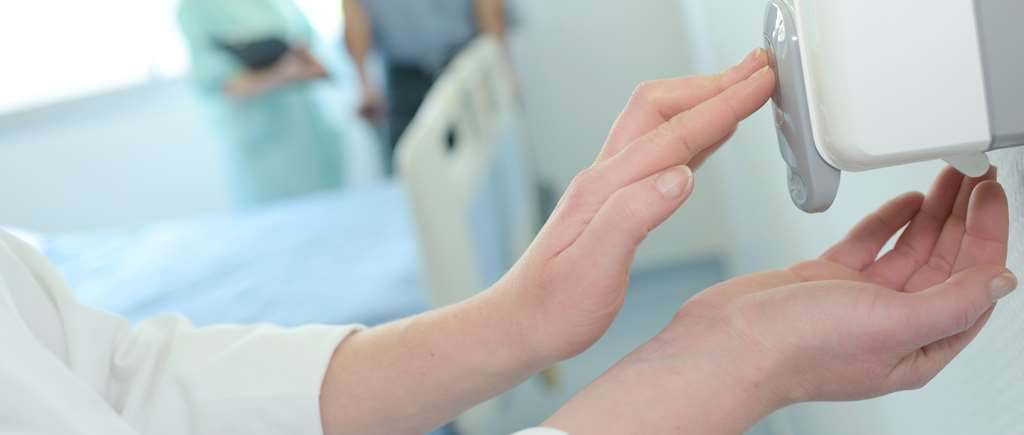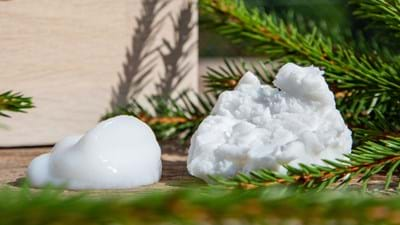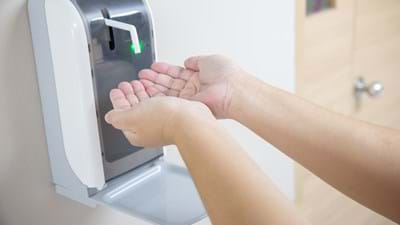Hydroalcoholic hand sanitisers are the best option for keeping up your hand hygiene when soap and water are not accessible. They are currently one of the most used and needed products these days.
If you are considering formulating a hand sanitiser, read about how you can use Exilva® Microfibrillated Cellulose, a bio-based material, to structure and thicken your formulations and provide a non-tacky feel.
From the Centers for Disease control and prevention CDC website:
"Hand Hygiene is best practiced by washing hands with soap and water. This act reduces the amount of all types of germs and chemicals on hands. If soap and water are not available, using a hand sanitizer with a final concentration of at least 60% ethanol or 70% isopropyl alcohol inactivates viruses that are genetically related to, and with similar physical properties as, the COVID-19 virus."
Increased need for thickeners, rheology additives, structuring agents for hand sanitiser:
Due to the global situation and recommendations above, the need for, and use of hand sanitisers has increased in a way that probably nobody in 2019 would have predicted or anticipated. There is therefore high need for quick availability and supply of not only the alcohols, but also additives that usually are used in these formulations as rheology and structuring agents.
We have carried out a study to show that it’s possible to use Exilva, a bio-based cellulose fibrillar structuring agent to control the flow and rheology of high concentration alcohol formulations such as hand sanitisers.
Hand sanitisers are traditionally, and most often clear transparent gels. Not all common rheology additives and structuring agents are soluble or dispersible in high concentrations of solvents. In hand sanitisers, rheology additives such as acrylates and cellulose derivatives are traditionally used to make these products gel-like.
What are the features of a hand sanitiser with an innovative and high performance material such as Exilva?
Exilva can be used to thicken and structure formulations containing a very high concentration of alcohols and up to 90 wt% Ethanol and Isopropanol.
Below is an example of a formulation containing Exilva MFC:
| Ingredients |
Weight Percentage |
Function |
| Water |
14.50 |
Solvent |
| Glycerol |
5.00 |
Denaturant, Humectant |
| Exilva MFC ** |
0.50 |
Rheology additive |
| Alcohol * |
80.00 |
Active |
* Alcohols tested: Ethanol and Isopropanol
** Concentration based on dry cellulose fibril content
The addition order and dispersion method used are important when looking for optimal performance of Exilva.
Appearance:
The resulting hydroalcoholic formulations (both with Ethanol and Isopropanol) are homogeneous, non-transparent and opaque. The non-soluble nature of the entangled cellulose fibrils in Exilva is responsible both for the structuring of high levels of alcohol and giving an opaque appearance.
Skin feel:
Exilva is a non-greasy, non-tacky rheology additive improving the skin feel of the end formulation resulting in a non-sticky product. Read more about the use of cellulose fibrils in cosmetics here.
Shear thinning:
Due to the extreme shear thinning behaviour of the fibrils, hand sanitiser containing Exilva is possible to spray with a nice spray mist and a non-dripping effect on vertical surfaces.
Brookfield viscosity:
The measured Brookfield viscosity of this alcohol containing formulation is 1 200 – 1 300 mPa s (Spindle V-72 ; 10rpm for 5 minutes). The viscosity can be adjusted by adjusting the concentration of MFC used.
Keep in mind that due to the extreme shear thinning behaviour of Exilva, Brookfield viscosity values measured under a given shear are much lower than the viscosity at rest of a formulation with Exilva.
Yes, you can!
You can use Exilva MFC as a rheology and structuring agent for high concentrations of alcohols, as in hand sanitisers. Exilva imparts a very high viscosity at rest to the formulation and allows for good flow properties and possibility to spray.
Exilva is a different rheology additive than what is traditionally used for the mentioned applications. The end product might look different but will be sprayable, non-tacky and will probably lower the carbon footprint of the end formulation due to its bio-based nature.
Order a free sample to test or contact us for more detailed information on the use of Exilva with alcohols and in hand sanitisers.



